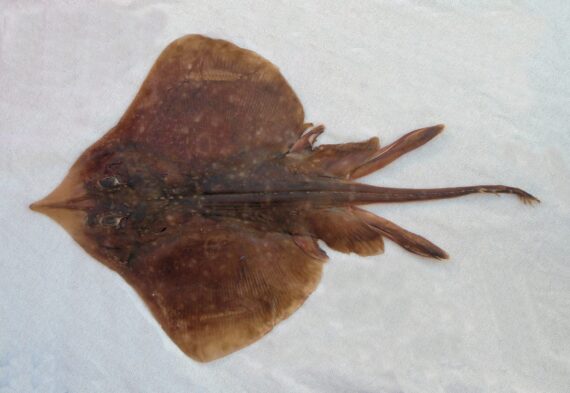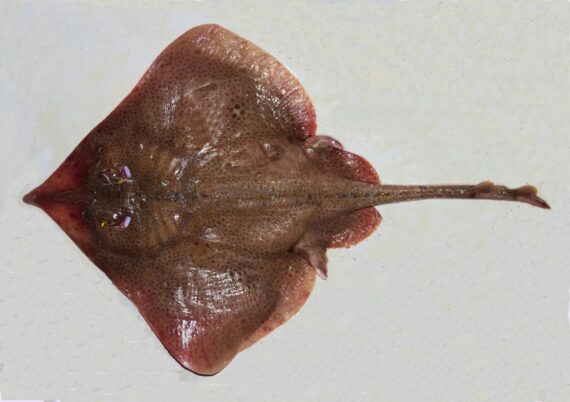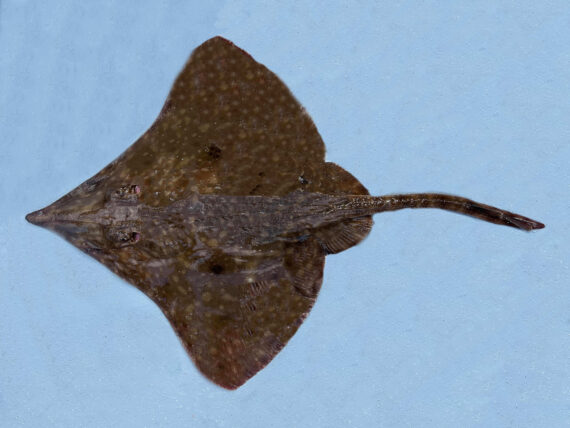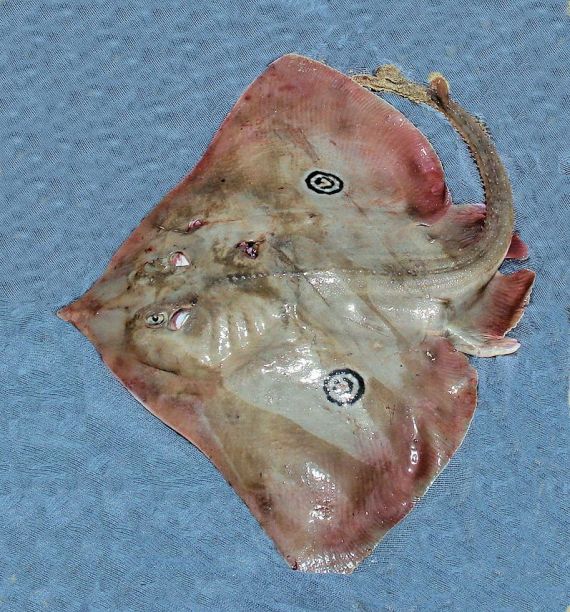Skate Family – Rajidae
There are currently SIX members of the Skate or Rajidae Family, one from the Atlantic Ocean and five from the Pacific Ocean, presented in this website:
FROM THE ATLANTIC (1):
FROM THE PACIFIC (5):
The Skate or Rajidae Family has two hundred global species that are found in thirteen genera of which twenty are in Mexican waters, thirteen in the Atlantic Ocean and five in the Pacific Ocean. The family has two subfamilies – the Rajinae or Hardnose Skates and the Arthynchobatinae or Softnose Skates. They are marine fish that are found in shallow and deep waters of tropical and warm temperate areas. In Mexico they are collectively known as rayas. They date to the Cretaceous Period, one hundred million years ago.
The Skates range in size from 20 cm (7.9 inches) to 2.4 m (8 feet 0 inches). They all have familiar disc outlines, which are thin and taper toward the edges, and long tails. Their head, body, and pectoral fins form a flattened rhomboidal or heart-shaped disc. Their heads have blunt to pointed snouts, eyes on top of the head with spiracles immediately behind, and nostrils in front of the mouth. They have 2 very small dorsal fins at the rear of their very slender tail that are less than twice the disc length. Their pelvic fins have 2 lobes with concave outer margins that are completely separated by a notch. The upper surfaces of their bodies are covered with prickles and several have a row of thorns along the midline. They differ from Stingrays by their larger size and their location in deeper waters. They have convex pelvic fin margins with one lobe, a distinct caudal fin, no dorsal fin, and one or two large venomous tail spines. The Stingrays also have different reproduction strategies as they are viviparous and give birth to live fish.
The various skate species are very similar in appearance, which contributes to the lack of knowledge of individual differences among the species. They all have a uniform dull drab brown coloration. Their undersides are a uniform white or light yellow color. They are well camouflaged when viewed from above or below. They are all bottom dwellers, found at depths up to 10,000 feet, and spend a significant amount of time partially buried in mud or sand. They can move through water by undulations of the large pectoral fins with guidance being provided by the caudal fin. They are omnivores feeding on large crustaceans including crabs, mollusks, lobsters, shrimp, worms, and fish. Skates are oviparous and lay large eggs in black or dark green leathery shells, known as Mermaid’s Purses, which have an oblong outline with a hollow tendril at each corner which is used to attach to marine objects. They are produced in pairs with each case containing up to 7 embryos. The spent Mermaid’s Purses are common objects on beaches. They vary in size and shape by species and can be used in species identification.
The Skates have slow growth rates, with later maturity and low reproduction rates and are subject to overfishing is some parts of the world. In general, they are considered a nuisance fish being caught in abundance as a by-catch in otter trawls and by hook and line. The vast majority are returned to the sea but some are retained and made into fish meal.
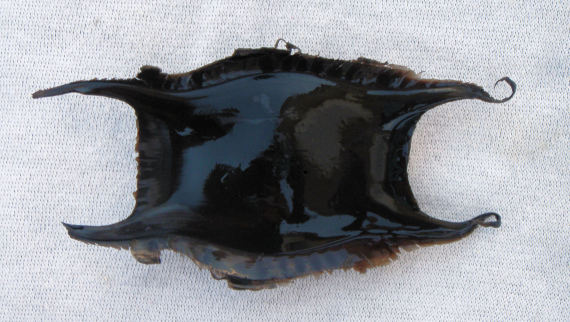
 Rajidae Sp. Egg Case, Raja sp.: Collected by deep water shrimp trawlers off the coast of southern Baja California Sur, November 2009. Length: 7.0 cm (2.75 inches). Identification courtesy of H.J. Walker, Jr., Scripps Institution of Oceanography, La Jolla, California. Pictured are two different cases of similar size – one black and one tan that have length to width ratios are which are probably from two different species.
Rajidae Sp. Egg Case, Raja sp.: Collected by deep water shrimp trawlers off the coast of southern Baja California Sur, November 2009. Length: 7.0 cm (2.75 inches). Identification courtesy of H.J. Walker, Jr., Scripps Institution of Oceanography, La Jolla, California. Pictured are two different cases of similar size – one black and one tan that have length to width ratios are which are probably from two different species.


